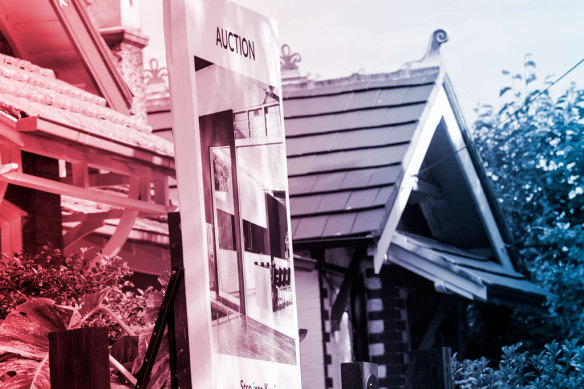Labor finally turns around primary vote slide – just
By David Crowe
There is a glimmer of hope for the government in the latest Resolve Political Monitor after months of steady falls in support for Labor and its leader.
The Labor primary vote has risen a single percentage point over the past month, from 28 to 29 per cent, in a shift that looks negligible because it is within the margin of error for the latest survey.

Labor’s economic message is not cutting through at a time when so many people are struggling with the cost of living.Credit: Fairfax Media
But this is the only time Labor has increased its primary vote in the Resolve Political Monitor this year. The last time Labor had a substantial boost in its primary vote in this survey was just before last year’s federal budget when its core support rose from 39 to 42 per cent. It also gained a single percentage point last October. Labor has gone far too long without a sign of improvement.
The weakness in the party’s core support has led to real anxiety in the wider labour movement about whether Prime Minister Anthony Albanese can revive the party’s fortunes in time for the election due by May next year.
In the gloomiest outlook, some experienced campaigners believe the government is not being straight with Australians about how hard things are right now.
The theory goes that rather than owning up to the hardship in the real world, Albanese and his ministers keep putting a positive spin on every piece of economic news. They sound, at times, like they are denying reality and therefore treating voters like mugs.
Peter Dutton, with his non-stop complaints about the economy, sounds more attuned to a frustrated electorate. This could explain why the opposition leader has kept his edge over Albanese as preferred prime minister for the third consecutive month.
This is the essential backdrop to the argument about inflation after the Reserve Bank blamed government spending for adding to demand. The government would prefer to smooth over this dispute, but it cannot deny the reality. The bank wants a curb on spending.
Treasurer Jim Chalmers was well within his rights last week to find fault with the central bank’s claim that the economy was a little too hot. It does not feel so warm to millions of Australians who have to deal with rising prices and falling real wages.
Another point in the government’s favour is that policy decisions in this year’s budget added about $10 billion to the economy this year, a small amount in a big economy. So what spending does the central bank have in mind? It is vague about this. Crucially, it blames the states as well as the Commonwealth.
To dismiss the bank’s warning, however, would be economic and political madness. Firstly, on the economics, Labor has to restrain spending to ensure its fiscal policy is working with rather than against monetary policy.
Secondly, on the politics, Labor cannot afford to be blamed if inflation remains too high for too long. This must lead to tight control on spending in the mid-year budget update in December and it should stop any loose decisions in the budget early next year. The RBA forces a rewrite of the standard draft for an election-year budget.
Labor may take heart from the fact that it has finally reached a pause in the long decline in its primary vote. In two-party terms on the Resolve figures, Labor has 50.5 per cent of the vote and the Coalition has 49.5 per cent, assuming preferences would flow as they did at the previous election. But the margin of error is 2.4 per cent, so the result is too close for any side to take real comfort.
And the government goes into the latest phase of the inflation debate in a weakened state because Australians are so unimpressed with what they hear. The Resolve Political Monitor shows that more voters trust Dutton and the Coalition on economic management and on running the nation’s finances. Voters used to prefer Labor on jobs and wages, but that has changed over the past two months. On this score, 34 per cent prefer the Coalition and 30 per cent favour Labor.
Dutton can probably savour the government’s troubles for a while – but not for too long. What is his approach to fiscal policy? He promised to reveal more personal tax cuts after voting for Labor’s rejig of the stage three tax cuts in February, but this would mean adding to inflation. Will he abandon the promise?
The latest polling is only a very early guide to the government’s fortunes because Dutton has not been truly tested on what he could do about the cost of living. He offers complaints without solutions. The real test of his support will come after he commits to serious decisions.
Cut through the noise of federal politics with news, views and expert analysis. Subscribers can sign up to our weekly Inside Politics newsletter.